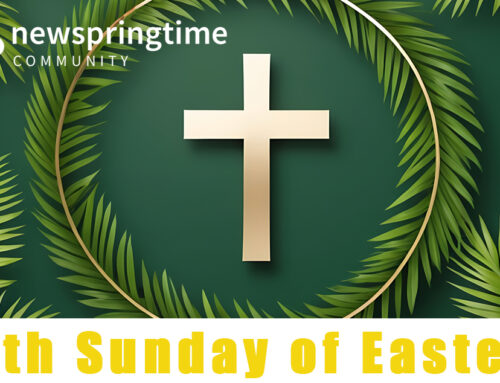The Catechism of the Catholic Church – 3rd April 2024
To download The Catechism of the Catholic Church course notes for 3rd April 2024, please click here
Catechism Commentary 24
In this commentary I want to share briefly on 4 points.
Firstly, although we believe in the next life, we don’t know a great deal about it.
Secondly, we will talk briefly about heaven.
Thirdly, I’ll talk briefly about hell.
Fourthly, then we will explore the doctrine of purgatory.
1] Talking about the next life the Sacred Congregation for the Doctrine of the Faith stated, “Neither Scripture nor theology provides sufficient light for a proper picture of life after death. Christians must firmly hold the two following essential points:
- On the one hand they must believe in the fundamental continuity, thanks to the power of the Holy Spirit, between our present life in Christ and the future life,
- On the other hand they must be clearly aware of the radical break between the present life and the future one, . . . it is in this marvellous mystery that our hope essentially consists. Our imagination may be incapable of reaching these heights, but our heart does so instinctively and completely.”
2] Those who die in the state of grace and friendship with God enter heaven. Speaking about it, Pope Benedict XVI said, “With the term ‘heaven’, we want to affirm that God – the God who made himself close to us – does not abandon us even in and beyond death, but he has a place for us and gives us eternity; we want to affirm that within God there is a place for us.” It would be a mistake to think that heaven will exist in some otherworldly, spiritual realm. Echoing the teaching of scripture, the Church teaches that there will be a new heavens and a new earth, when the realm of spirit will transform our fallen and sinful world. Par 48 of the Dogmatic Constitution on the Church in the Modern World says, “The Church, to which we are all called in Christ Jesus, and in which we acquire sanctity through the grace of God, will attain its full perfection only in the glory of heaven, when there will come the time of the restoration of all things. At that time the human race as well as the entire world, which is intimately related to man and attains to its end through him, will be perfectly re-established in Christ.” Par. 1046-7 of the Catechism of the Catholic Church answers, “The visible universe, then, is itself destined to be transformed, “so that the world itself, restored to its original state, facing no further obstacles, should be at the service of the just,” sharing their glorification in the risen Jesus Christ.”
3] In harmony with scripture the Church teaches that Hell exists as a state of utter and irreversible alienation from God. Commenting on the New Testament depiction of hell St John Paul II said, “The images of hell that Sacred Scripture presents to us must be correctly interpreted. They show the complete frustration and emptiness of life without God.” Rather than being a place, hell indicates the state of those who freely and definitively separate themselves from God, the source of all life and joy. Speaking about hell in par. 45 of Spe Salvi, Pope Benedict XVI said, “There can be people who have totally destroyed their desire for truth and readiness to love, people for whom everything has become a lie, people who have lived for hatred and have suppressed all love within themselves. This is a terrifying thought, but alarming profiles of this type can be seen in certain figures of our own history. In such people all would be beyond remedy and the destruction of good would be irrevocable: this is what we mean by the word Hell.”
4] The Catholic Church teaches that although many people die in a state of grace, there may be imperfections that need painful purification before entering heaven. Pope Benedict suggested that 1 Cor 3:12-15, describes the symbolic fire of purgatory when it speaks of the way in which, we will be tested, “gold, silver, precious stones, wood, hay, straw—each man’s work will become manifest; for the Day will disclose it, because it will be revealed with fire, and the fire will test what sort of work each one has done. If the work which any man has built on the foundation survives, he will receive a reward. If any man’s work is burned up, he will suffer loss, though he himself will be saved, but only as through fire.” Pope Benedict went on to say in par 47 of The Hope of Salvation, “Some recent theologians are of the opinion that the fire which both burns and saves is Christ himself, the Judge and Saviour. The encounter with him is the decisive act of judgement. Before his gaze all falsehood melts away. This encounter with him, as it burns us, transforms and frees us, allowing us to become truly ourselves. All that we build during our lives can prove to be mere straw, pure bluster, and it collapses. Yet in the pain of this encounter, when the impurity and sickness of our lives become evident to us, there lies salvation. His gaze, the touch of his heart heals us through an undeniably painful transformation “as through fire.” . . . The pain of love becomes our salvation and our joy. It is clear that we cannot calculate the “duration” of this transforming burning in terms of the chronological measurements of this world. The transforming “moment” of this encounter eludes earthly time-reckoning—it is the heart’s time, it is the time of “passage” to communion with God in the Body of Christ.” Pope Benedict seemed to believe that this purifying purgatorial experience is intense and instant rather than prolonged in a temporal sense.





